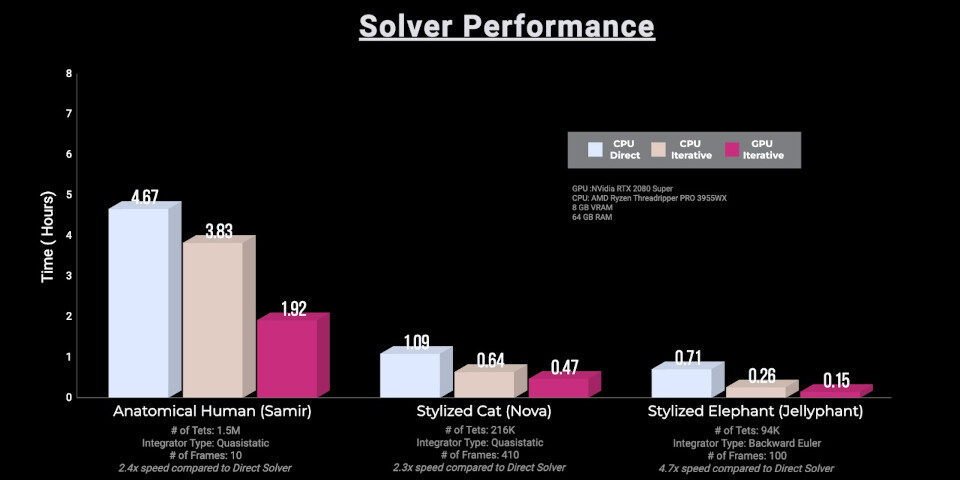Unity releases Ziva VFX 2.2
Unity’s latest demo video for Ziva VFX. Version 2.2 of the Maya soft tissue simulation plugin adds a new GPU solver, making it possible to accelerate solves on compatible Nvidia GPUs.
Unity has released Ziva VFX 2.2, the latest version of its soft tissue simulation plugin for Maya.
The update introduces a new GPU solver, which makes it possible to use current Nvidia GPUs to accelerate solves, and the option to visualise stretch in attachments in the Maya viewport.
A powerful tool for creating stable, accurate simulations of soft tissues
First released publicly in 2017, Ziva VFX is now a staple of visual effects pipelines, with users including DNEG, Scanline VFX and Image Engine.
The plugin mimics the stiffness, density and volume preservation of real tissues, including bone, tendons, muscles and skin; and supports multiple types of physical damping.
As well as editing parameters directly, Ziva VFX supports a brush-based workflow making it possible to paint material properties and mesh resolution, and even paint in muscle attachment points and muscle fibres.
The plugin was acquired by Unity last year along with its original developer, Ziva Dynamics, and is now part of the firm’s new Unity Wētā Tools division.
Ziva VFX 2.2: new GPU solver and viewport visualisation options
The main new feature in Ziva VFX 2.2 is the new GPU solver: a GPU implementation of the Iterative Solver introduced in Ziva VFX 2.0.
It’s CUDA-based, and requires a Nvidia GPU from the Turing generation or later: roughly speaking, any Nvidia consumer or workstation card less than five years old.
The documentation doesn’t put a figure on the likely speed boost from solving on the GPU, but notes that performance is better when an asset is large and complex.
For light assets, the GPU solver will be “less performant”.

Updated 11 August 2023: Unity has published a blog post with a chart showing the relative performance of the CPU and GPU Iterative Solvers.
Even with a four-year-old GPU (a Nvidia GeForce RTX 2080 Super), a realistic human character (left of chart) solves just under 2x faster on the GPU, with smaller speed boosts for more stylised characters.
New viewport visualisation capabilities
In addition, it is now possible to visualise stretching of attachments in the Maya viewport, using user-defined colours to indicate how much each part is being stretched.
Pricing and system requirements
Ziva VFX 2.2 is available for Maya 2019+, running on Windows 7-10 or RHEL/CentOS 7.3+ Linux. The software is available rental-only.
Node-locked Ziva VFX Indie licences, intended for productions with total revenues of under $500,000/year, cost $50/month or $500/year. For larger projects, floating Ziva VFX Studio licences cost $1,800/year.
Read a full list of new features in Ziva VFX 2.2 in the online release notes
